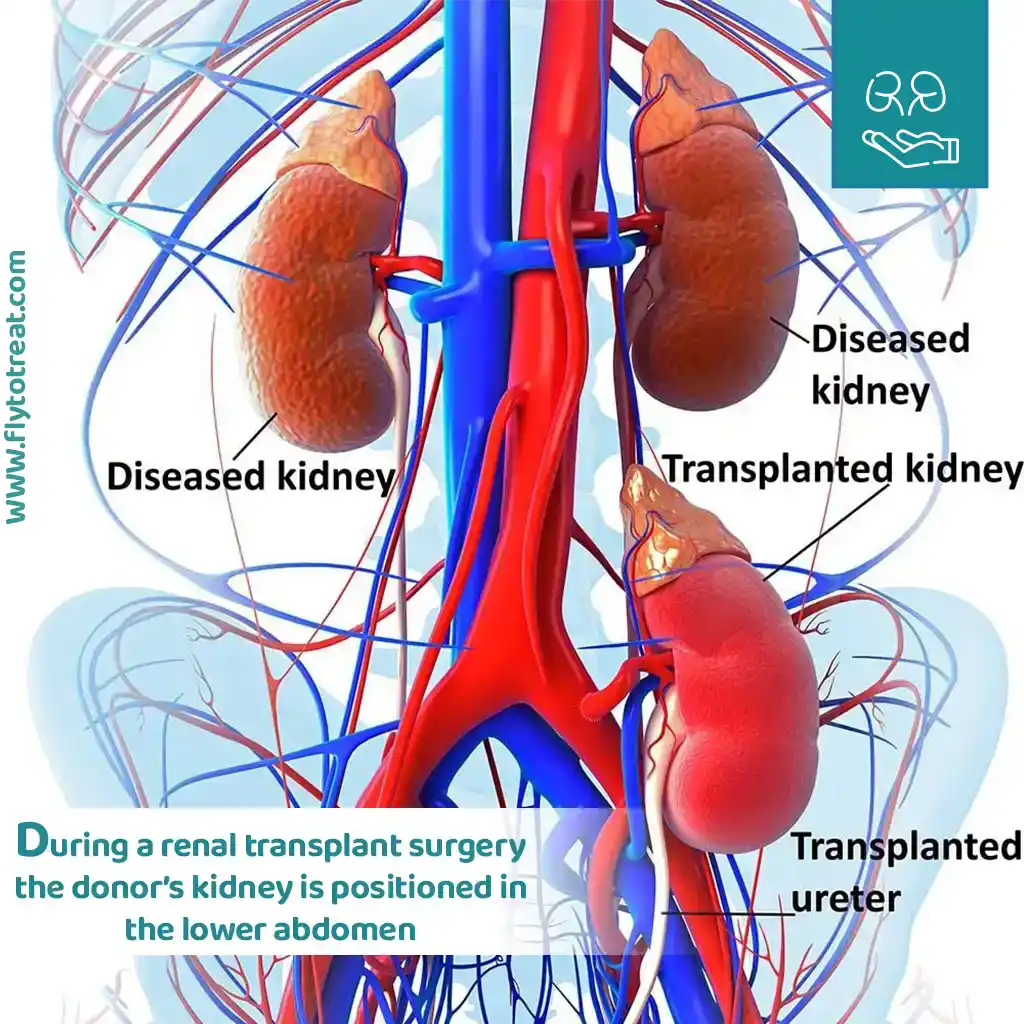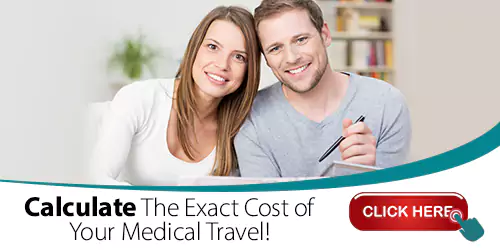
How kidney transplant procedure take place step by step?
A kidney transplant procedure would be life-saving when a patient is struggling with chronic kidney disease (CKD) and the life-threatening effects of weekly dialysis on their body. However, patients also might be worried about how a kidney transplant surgery will proceed and what its implications are, especially when it comes to going abroad for an operation. Here, we are going to discuss nearly all the aspects of the Kidney transplant procedure step by step.
The first step: Finding a donor
Organ donation is a life-saving act, and some selfless people choose to donate their organs. There are two ways to donate: as a living donor or a deceased donor. Choosing between these options isn't always up to you.
If you are considering going abroad for kidney transplant surgery, be aware that regulations vary widely. In countries like Germany, living kidney donation from immediate family members is permitted, but only if no suitable deceased donor kidney is available. In India, both deceased and living donors must be relatives of the recipient and cannot have had any prior financial transactions related to the donation. But kidney transplantation in Iran has easiest law and rules, the only requirement for donors, regardless of whether they are living or deceased, is to be of the same nationality as the recipient.
Once you have a donor, professionals determine if you are compatible or not.
The second step, examining compatibility
The donor and the recipient will undergo thorough testing to check if they are matched. Here is a summary of the testing procedure:
Blood Type Compatibility:
• Four main blood types: O, A, B, and AB.
• is a universal donor, and AB universal recipient (see compatibility chart).
• Tissue typing further assesses compatibility through HLA antigens.
BMI:
• The optimal BMI for the recipient is 25 kg/m2 for the best long-term outcome.
• High or low BMI can increase risks.
• Other factors impacting outcomes: are diabetes, hypertension, smoking, and cardiovascular disease history.
HLA Tissue Typing and Crossmatching:
• Tests for compatibility between recipient and donor immune systems.
• HLA typing identifies an individual's antigens.
• Crossmatching checks for antibody rejection reactions.
• Positive results mean the transplant won't proceed (potentially treatable with desensitizing therapy).

The third step; kidney transplant surgery and how it works
In the course of renal transplant surgery, the donor’s kidney will be positioned in the lower abdomen. The blood vessels of the newly transplanted kidney are connected to the blood vessels in the lower abdominal region, situated just above one of the legs. Additionally, the ureter, the conduit through which urine flows to the bladder from the new kidney, is linked to the bladder.
The recipient's new kidney is placed on the lower right or left side of the abdomen, where it is surgically attached to nearby blood vessels. Placing the kidney in this position allows it to be easily connected to blood vessels and the recipient's bladder.
The new kidney begins to function immediately, and the recipient may begin to feel better within a few days. However, it may take several weeks or months for the new kidney to fully function.

Fourth step; Medications after the Kidney Transplant Procedure
Kidney transplantation recipients often require a combination of medications to prevent rejection of the new kidney, manage existing medical conditions, and protect the health of the transplanted organ. These medications play a crucial role in ensuring the success of the renal transplant surgery and maintaining long-term well-being.
Immunosuppressants, the cornerstone of post-transplant therapy, work by suppressing the immune system's natural response to foreign tissue, preventing it from attacking the transplanted kidney. While effective in preventing rejection, immunosuppressants also weaken the body's defenses, making it more susceptible to infections.
To combat this heightened susceptibility, transplant recipients may be prescribed antibiotics and antivirals, which target and eliminate harmful bacteria and viruses, respectively. These medications, though beneficial, can cause side effects such as nausea, diarrhea, and high blood pressure.
Fifth Step; Recovering from kidney surgery
Recovering from a kidney transplant surgery for the recipient is different than the donor. The process of recovering is more challenging for a recipient and needs careful attention. Both recipients and donors can get back to normal life after a few weeks. While kidney recipients must take immunosuppressant medications for the rest of their lives and must avoid infections and viral dangers, the process for kidney donors is limited to having a healthy lifestyle. Both recipients and donors must be aware of that delicate process. So let us take a closer look at the recovery requirements for those who will undergo a kidney transplant surgery; whether they are recipients or donors:
Recovery requirements for the recipient
As discussed earlier, the recipient must adhere to the Medication Regimen: Taking immunosuppressant medications as prescribed, is crucial to prevent the body from rejecting the transplanted kidney.
• Prioritizing Infection Prevention: Recipients must practice good hygiene, avoid contact with sick individuals, and get vaccinated against recommended diseases, such as the flu and pneumonia.
• Regular Monitoring and Follow-ups: Regular checkups with the transplant team are essential for monitoring kidney receivers' health, adjusting medications, and addressing any concerns promptly.
• Lifestyle Modifications: Adopting a healthy lifestyle is paramount to long-term success. Both kidney receivers and kidney givers must quit smoking, maintain a balanced diet rich in fruits, vegetables, and whole grains, engage in regular physical activity, and limit alcohol consumption.
• Addressing Specific Health Concerns: Being aware of potential health issues that may arise after a kidney transplant surgery is crucial, such as new-onset diabetes, heart disease, high blood pressure, high cholesterol and blood lipids, and bone disease. Recipients must work closely with their doctor to manage these conditions effectively.
• Seeking Prompt Medical Attention: If they experience any signs of infection, rejection, or kidney dysfunction, they must seek prompt medical attention. Early diagnosis and treatment are essential for maintaining a successful transplant.
Recovery requirements for The Donor
Living kidney donation is a major medical procedure with both physical and emotional effects. While most people can live normal lives with one kidney, there are some potential risks to consider.
• The recovery period after kidney donation typically takes 4-6 weeks. During this time, they may experience pain, swelling, and fatigue. Donors will need to take it easy and avoid strenuous activities. Most people can return to work and normal activities within a few weeks.
• People who donate a kidney can expect to have a normal life expectancy. However, there is a slightly increased risk of developing high blood pressure and kidney stones.
• Living kidney donation can be a rewarding experience, but it can also be emotionally challenging. donors may experience feelings of anxiety, guilt, or sadness. It is important to talk to a doctor or a mental health professional if they are struggling with these emotions.
• Maintain a Healthy Lifestyle: Continue healthy habits like a balanced diet, regular exercise, and adequate sleep.
• Quit Smoking: Smoking can increase the risk of complications during and after surgery.
• Follow Instructions: Strictly adhere to the instructions provided by the transplant team.
How Long Is the Kidney Transplant Procedure
A renal transplant surgery often takes 3 to 5 hours. During these life-changing hours, a healthy kidney would be placed into the recipient's body, where it can perform all of the functions that the recipient's failing kidney couldn’t. As mentioned, before it will be placed on the lower right or left side of the abdomen, where it is surgically attached to nearby blood vessels. Then this new kidney will immediately start functioning. But to prevent the recipient's body from rejecting it as a foreigner, they need a lifetime of delicate aftercare. Let us dive into the most important part of aftercare for a kidney transplant surgery recipient.
In conclusion
The journey of undergoing a kidney transplant is a complex and multifaceted process that encompasses finding a compatible donor, extensive pre-surgery testing, the transplant surgery itself, post-operative medications to prevent rejection, and a comprehensive recovery plan for both the recipient and the donor. Each step is crucial for the success of the transplant and the long-term health of the recipient. The transplant offers a new lease on life for those suffering from chronic kidney disease, with significant improvements in survival rates and quality of life. However, it also demands careful consideration of potential complications, adherence to a strict medication regimen, and lifestyle adjustments to maintain the health of the transplanted organ. The collective efforts of healthcare professionals, donors, and recipients are fundamental to navigating the challenges and maximizing the benefits of kidney transplantation.
MEDICALLY REVIEWED BY: Dr. Ali Bazazi
AUTHOR: FlytoTreat's team of Authors
14 February 2024 - Updated At: 22 June 2024
Related Articles
Comment





